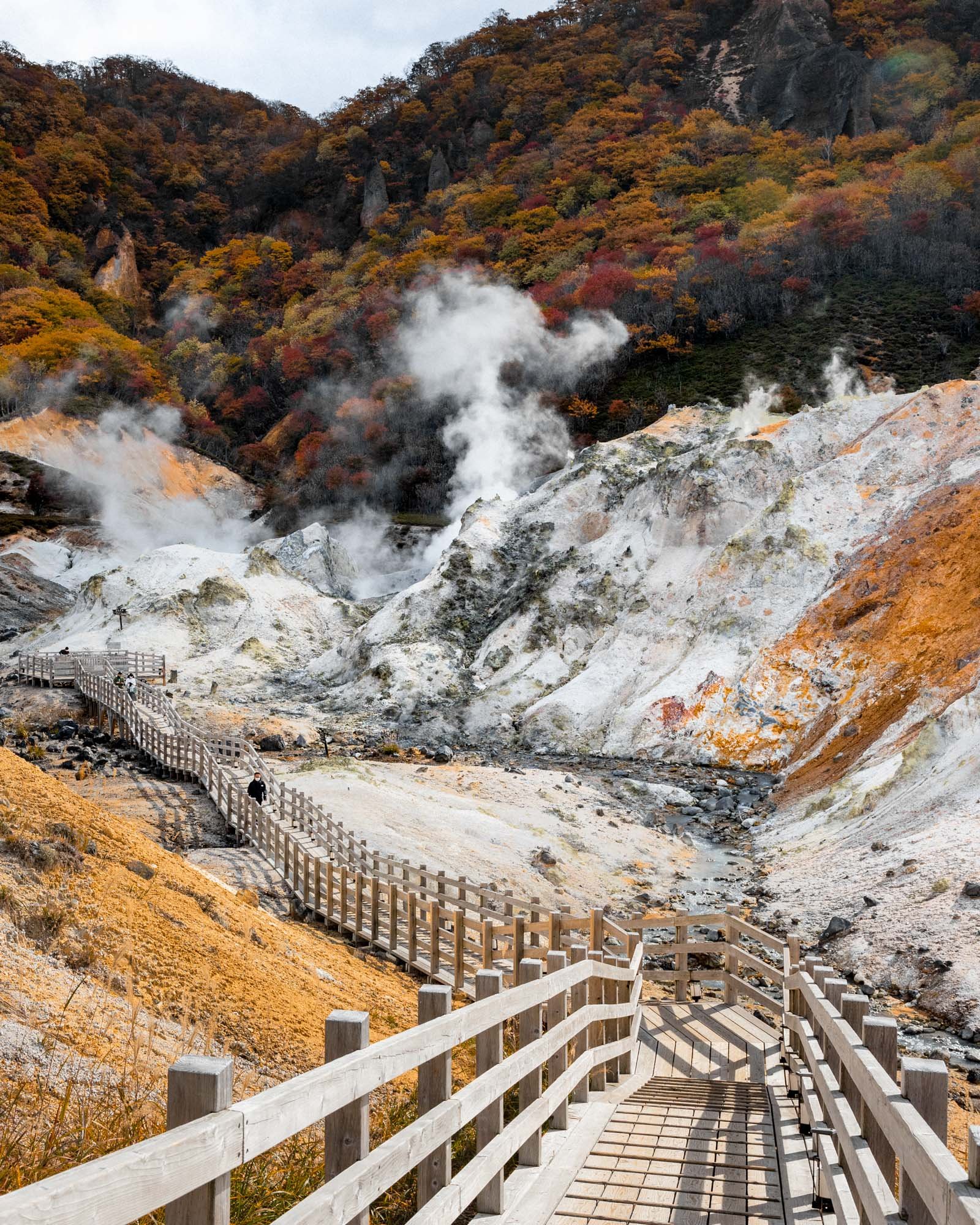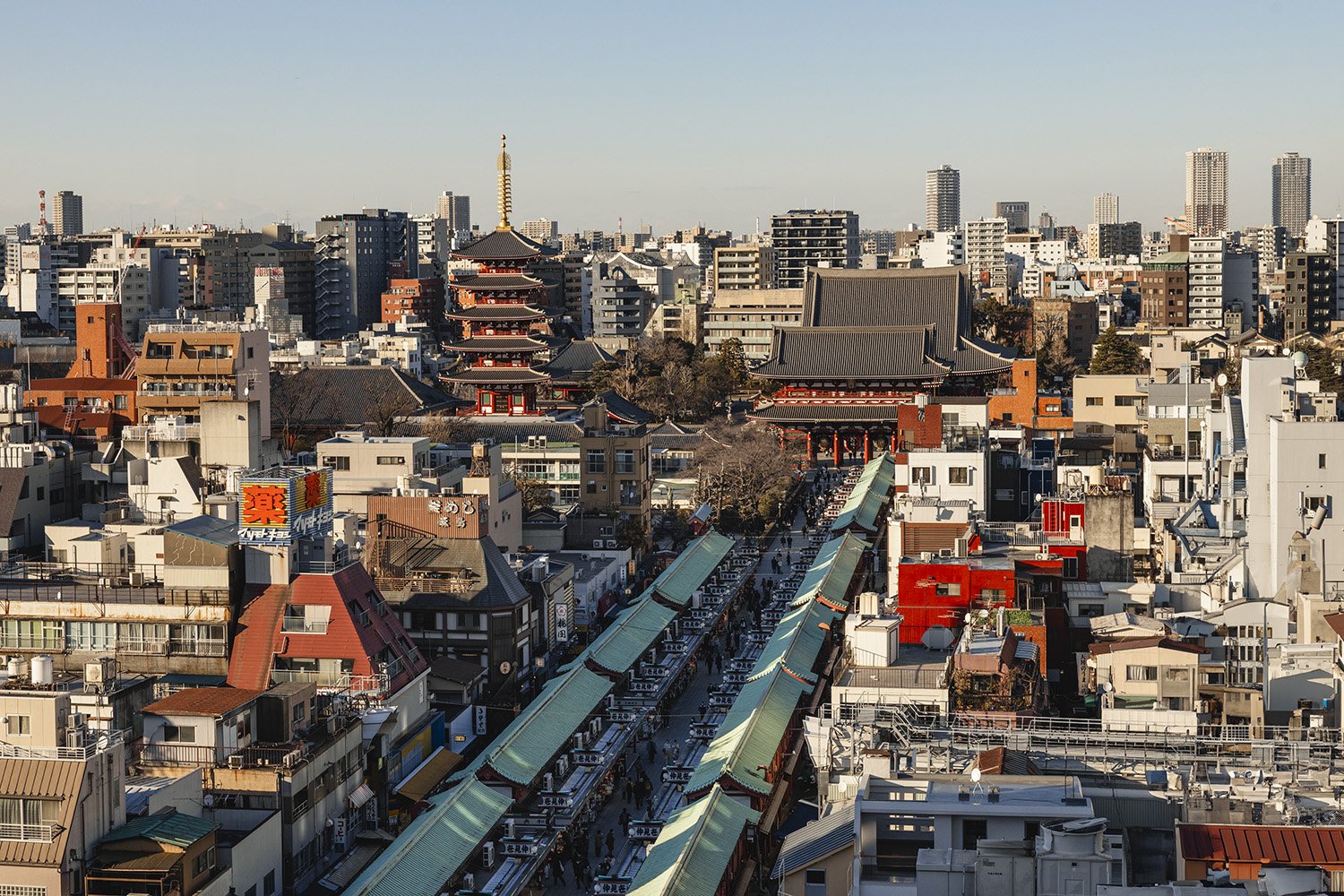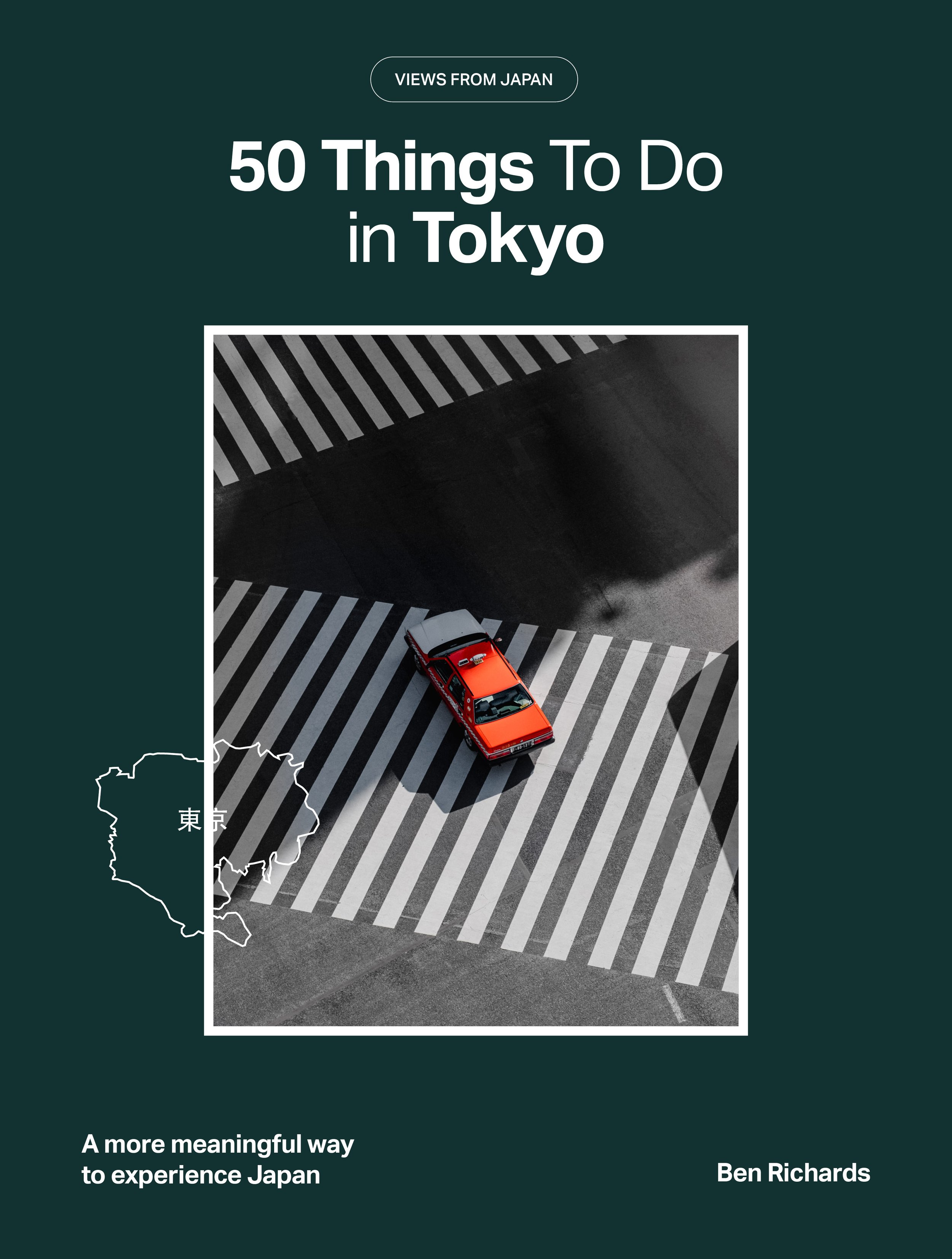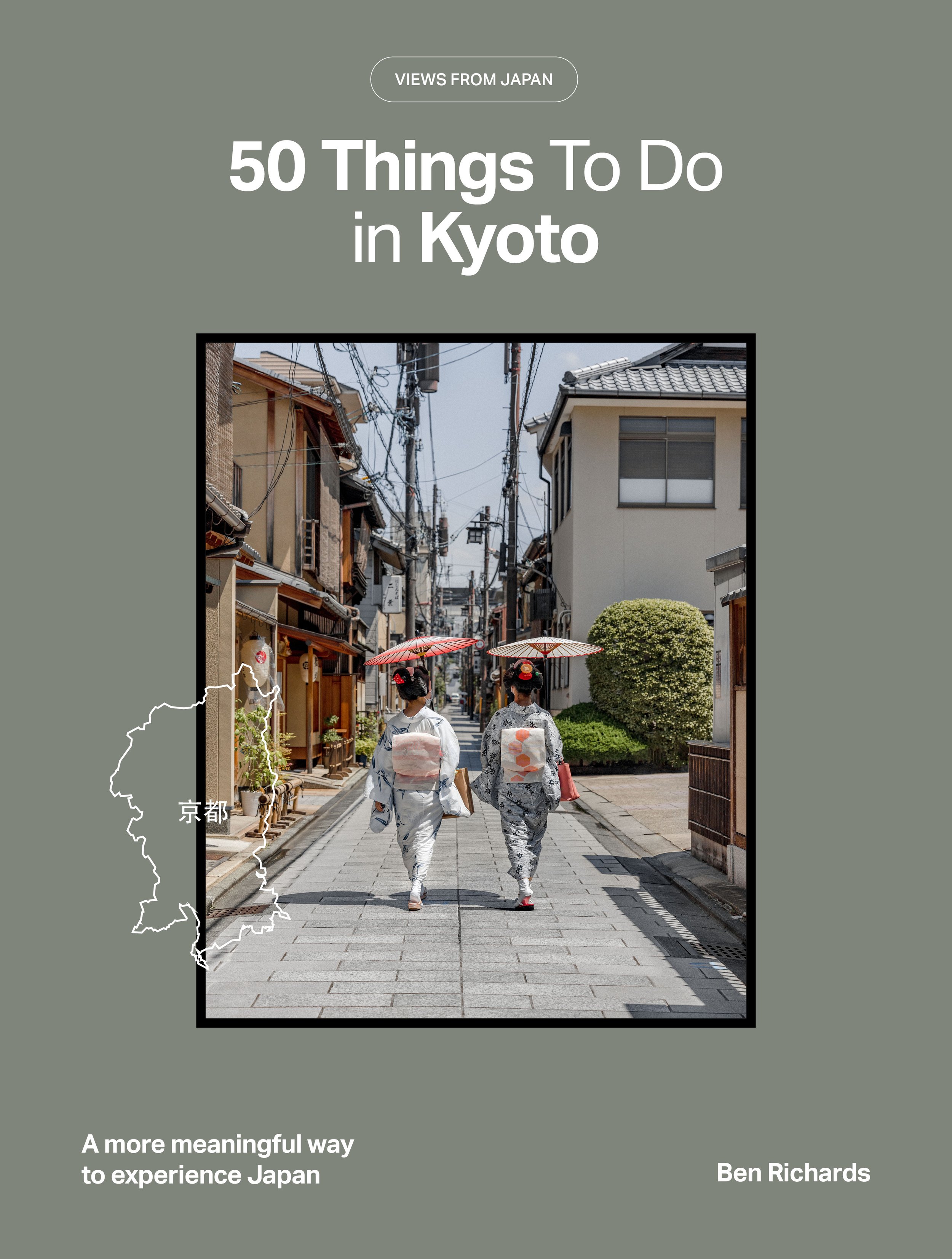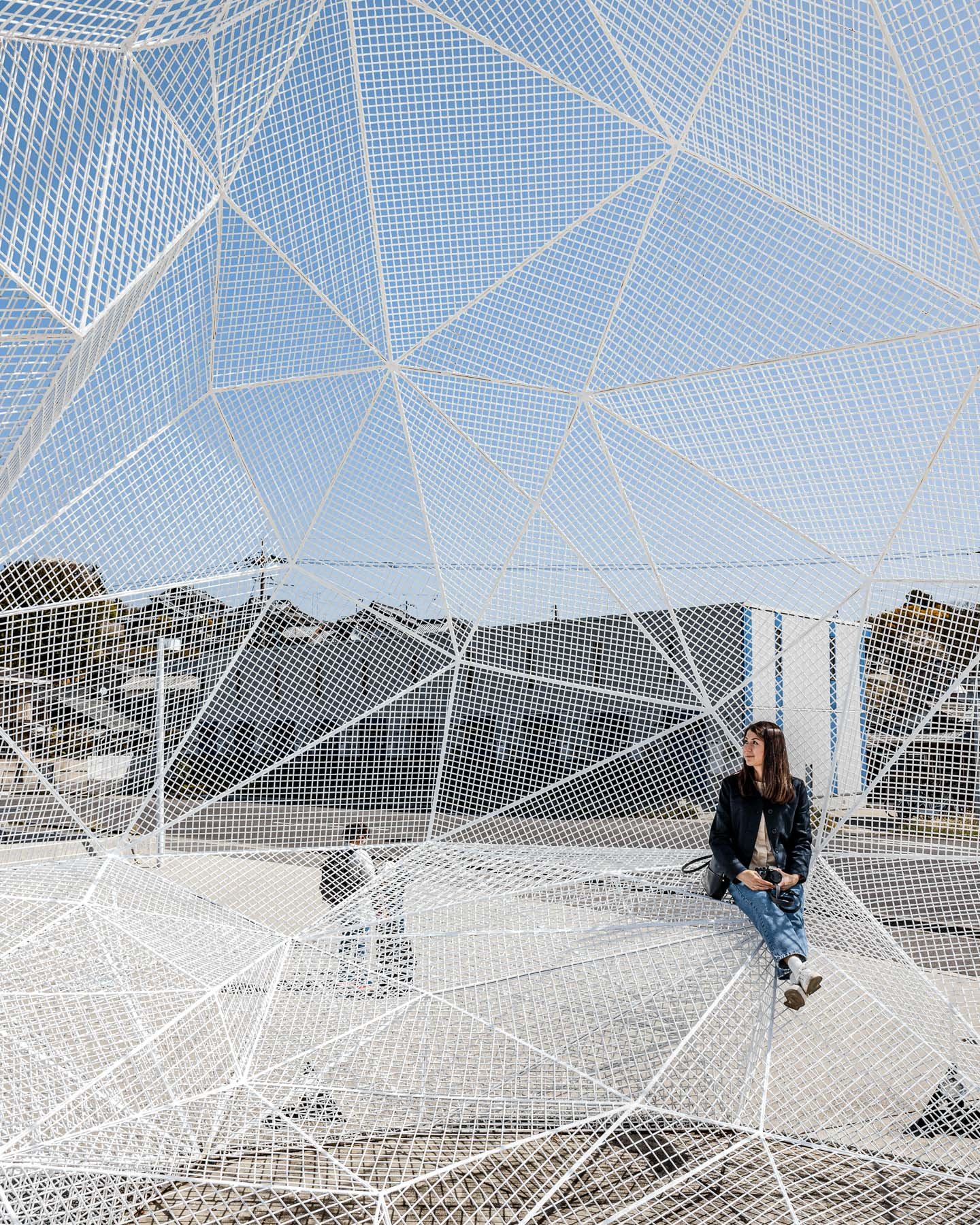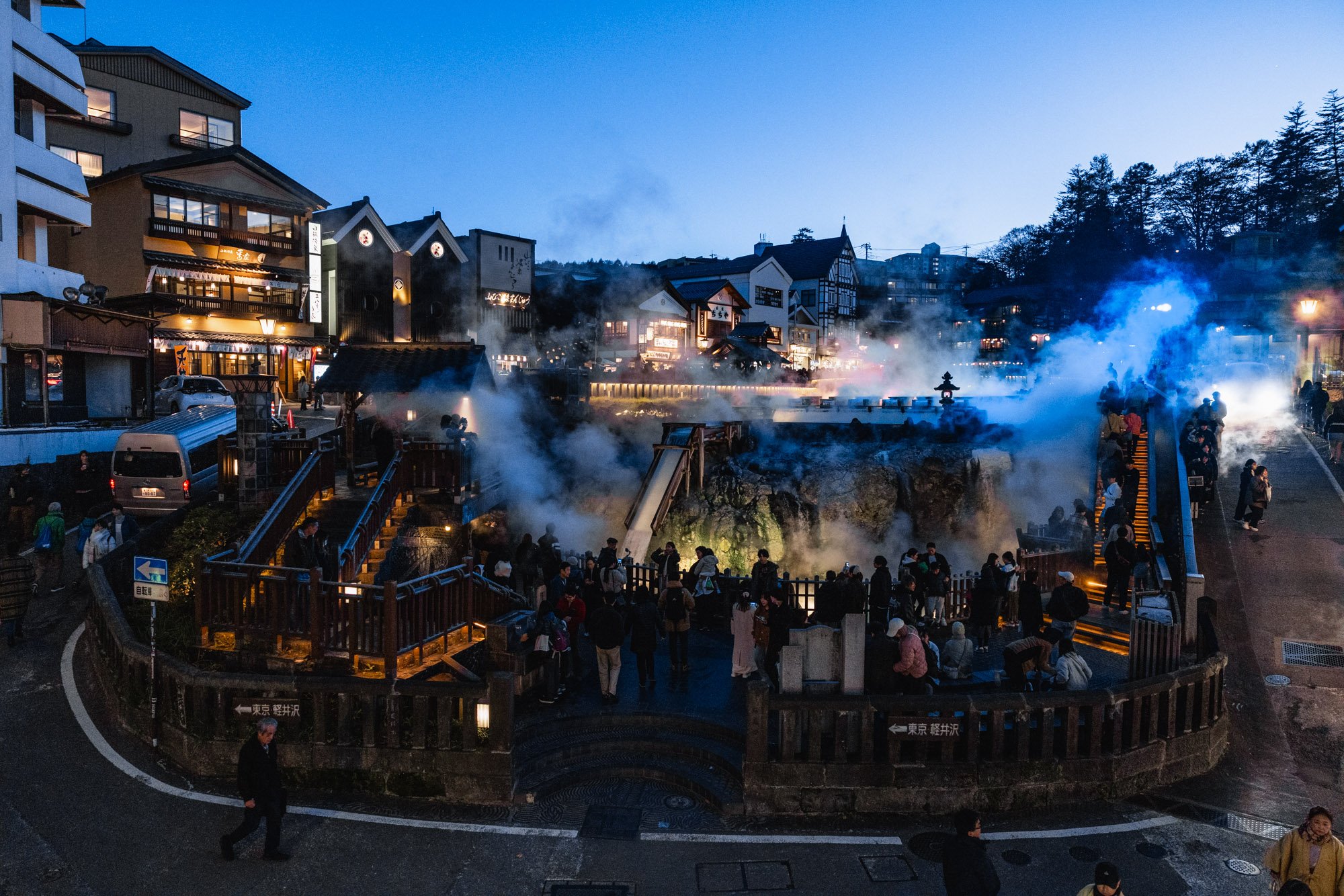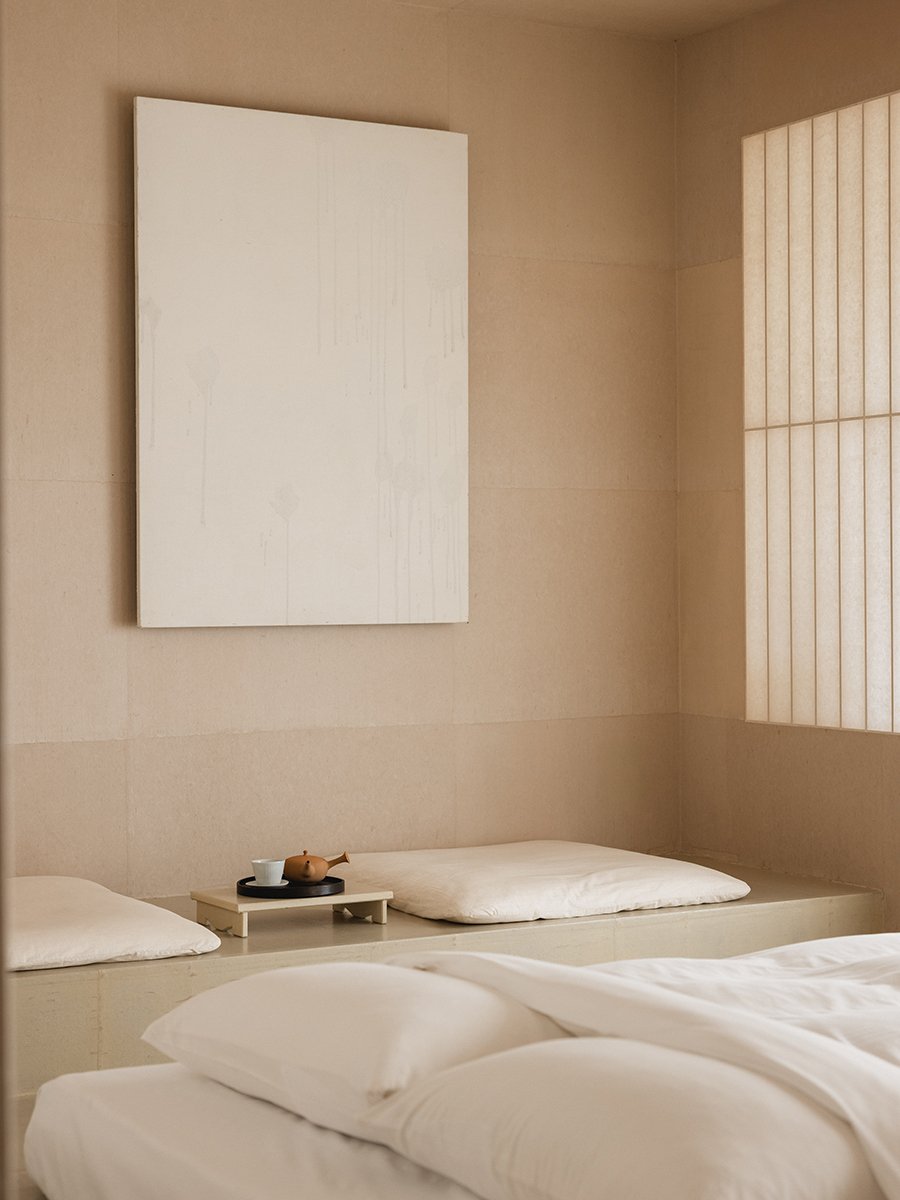The Ultimate Two-Week Japan Itinerary for Intermediates
For the culturally curious and open-minded travellers amongst us; or for those looking to have the most unique and memorable trip possible, the Golden Route won’t always cut it. Step away from the crowds, delve deeper into the cultural & historical side of the country, and design an unforgettable journey with this two-week Japan itinerary.
Visiting Japan for the first time? Don’t forget to check out my Ultimate Two-Week Itinerary for First Timers for a few more of the classic big hitters.
Intermediate Itinerary Highlights
Noboribetsu Jigokudani, Hokkaido – A steam covered, volcanic paradise, where sulphur vents and hot springs surround you.
Tomigaya, Tokyo – Here you’ll find specialty Scandinavian coffee shops, alongside independent boutiques.
Higashi Chaya District, Kanazawa – Machiya‑lined streets and Edo Period teahouses make up this well preserved geisha district.
Valley Gallery, Naoshima – Walk up the long path to the gallery and find artworks by Yayoi Kusama and more.
Dazaifu Tenmangu Shrine, Fukuoka – For over 1000 years the shrine has stood in dedication to learning, culture, and the arts.
Affiliate Disclosure: This post may contain affiliate links. If you make a purchase through these links, I may earn a small commission at no extra cost to you. Your support helps sustain this blog. Thank you for your support!
Days 1–4: Hokkaido
Start your journey in Japan’s northernmost prefecture; a nature-lovers paradise, Hokkaido experiences Japan’s longest winters and most beautiful autumn leaves. Enjoy unspoiled nature across many of the island’s national parks and rural landscapes including the Daisetsuzan National Park, Shiretoko National Park and Shikotsu-Toya National Park.
Highlights
Sapporo: Grab a bowl of steaming miso ramen, take a stroll through Odori Park, and finish your day off on the busy streets of Susukino with a world-famous Sapporo Beer. If you’re passing through in winter, make sure to visit the annual Sapporo Snow Festival.
Shirogane Blue Pond: This shimmering blue pond is located just outside the hot spring town of Shirogane Onsen. The pond is around a 5-minute walk through a small forested area and is nicely hidden away from the crowds.
Lake Shikotsu: Just one hour from Sapporo city, Lake Shikotsu is one of Japan’s clearest and deepest lakes, ringed by rolling hills and mountains. The lake sits within Shikotsu-Toya National Park where adventure awaits: paddle, cruise or scuba on the lake, or on land, make the one-hour hike to the active volcano, Mount Tarumae.
Noboribetsu Jigokudani: Roughly translated to ‘Hell’s Valley’, Jigokudani is a steam-covered, volcanic walkway, where sulphur vents and hot springs surround you. The landscape and town are covered by lush foliage and the area has a dedicated walkway for exploring the valley and local guides on hand to share more information.
Upopoy National Ainu Museum: Since the Ainu were officially recognised as an indigenous people in Japan, the country has been dedicated to preserving and celebrating their culture in various ways. Visitors at Upopoy can experience traditional Ainu arts, dancing and musical performances, such as the mukkuri (mouth harp) and tonkori (five-stringed instrument).
Getting Around
The easiest way to access Sapporo and surrounding areas is to take a direct flight to Hokkaido’s main international airport, New Chitose Airport. Flights operate daily from international hubs around the world. For domestic routes, Tokyo takes around 1.5 hours, and Osaka, takes around 1 hour and 45 minutes. From here, public transportation is available between the airport and Niseko resorts, however, I recommend car rental or a private car service.
Ready to go? Browse a full selection of Hokkaido hotels here.
Looking for more travel guides and itineraries? Subscribe to the weekly Views from Japan newsletter here.
Days 4–8: Tokyo
A city that needs no introduction, I have had the pleasure of calling Tokyo my home for almost five years – it simultaneously makes perfect sense and no sense at all. Come for the bright lights and stay for the Michelin-starred restaurants, architectural wonders and calming suburbs. I challenge you to forgo some of the big hitters and take a slower approach across some of the quieter neighbourhoods, art museums and traditional shopping streets.
Highlights
Kappabashi Kitchen Town: A stretch of road almost a kilometre long, expect to find professional pizza ovens, shokuhin sampuru, intricately designed traditional Japanese knives, and stacks upon stacks of Japanese ceramics and pottery.
Yanaka: A neighbourhood full of quaint edo-period wooden buildings that have been brought back to life - coffee shops, galleries, and restaurants peacefully take up residence inside these old dwellings. SCAI the Bathhouse, a particularly well-known venue for contemporary art and the kissaten Kayaba Coffee are both popular spots in Tokyo’s historic downtown district.
Nezu Museum: Designed by Kengo Kuma and opened in 1941, the Nezu Museum is home to over 7,000 pre-modern Asian and Japanese Art objects. Finish off your trip by exploring the extensive Japanese garden through the back, a welcome retreat from a day’s exploration of Tokyo.
The National Art Center Tokyo: Designed by the renowned architect Kisho Kurokawa in 2007, The National Art Center Tokyo is a striking gallery space in the heart of Tokyo intending to advance Japan’s understanding of art. With three floors flooded with natural light and a giant inverted cone made from cement, this free-entry venue the building itself is something to behold.
Shimokitazawa: A neighbourhood filled with vintage fashion boutiques, vinyl record stores, and perhaps the best soup curry in the capital city at Sama. Recent developments include Bonus Track, an outdoor courtyard project featuring pop-up galleries, bookshops and bars.
Getting Around
After arriving in Tokyo via plane from Hokkaido, the city is one of the most accessible destinations in the world, with a network of trains connecting almost every corner. The best way to travel around quickly is via the Tokyo Metro which covers central Tokyo. There are also six main JR train lines running through the city. To head further afield, shinkansen (bullet trains) run from Tokyo to most major cities in Japan. Tickets are easy to navigate - just use a prepaid IC card or consider day passes for busy travel days.
Ready to go? Browse a full selection of Tokyo hotels here.
Days 8–10: Kanazawa
Known as Japan’s Craft Capital, Kanazawa gives you a taste of ancient Japan, where geisha tiptoe through softly lit alleyways to private teahouses, and samurai culture reigns supreme. If you are looking for a dose of traditional Japanese culture and architecture, minus the Kyoto crowds, then Japan’s Craft Capital could be the ideal stop off point. Particular highlights include the Edo-period Higashi Chaya Geisha District, and Omicho Market to sample some of the region’s local seafood delicacies.
Highlights
Higashi Chaya District: First established in 1820, Higashi Chaya District is one of three small geisha districts in Kanazawa. Don your traditional Japanese kimono and join others as you walk the Machiya-lined streets and Edo Period teahouses, once frequented by rich merchants and nobility.
Kenrokuen Garden: Classed as one of Japan’s top three landscape gardens (alongside Mito’s Kairakuen and Okayama’s Korakuen), Kenrokuen in Kanazawa is a garden celebrated for its ambience and tranquil design.
Samurai Sword Making: Kanazawa has strong roots in Japan’s samurai era, with a dedicated historic samurai district, as well as museums and restaurants dedicated to the ancient art. Those who want to take the samurai experience to the next level can enjoy a private samurai demonstration and class to learn the sword-making process from start to finish.
Geiko Teahouse: The epitome of Japanese hospitality, geisha dedicate their entire lives to mastering traditional Japanese arts. Home to just five remaining private teahouses, Kanazawa is the ideal place to experience this tradition first-hand. Limited numbers of guests are permitted each evening, so plan ahead.
21st Century Museum of Contemporary Art: Designed by Japanese architects Kazuyo Sejima and Ryue Nishizawa of SANAA, the 21st Century Museum of Contemporary Art is filled with work from local and international artists. Particular exhibits worth viewing are Leandro Erlich’s ‘Swimming Pool’ as well as James Turrell’s ‘Blue Planet Sky’.
Getting Around
Arrive at Kanazawa Station by the Hokuriku Shinkansen, which can be used for swift travel to and from major cities like Tokyo and Kyoto. Due to its modest size, Kanazawa can easily be explored without the use of local transport or a car, and if you’re looking for a slower way to view the area, the charm of Kanazawa's traditional neighbourhoods and renowned gardens are both easily accessible on foot or by bicycle.
Ready to go? Browse a full selection of Kanazawa hotels here.
Looking for More Unique Destinations Away From the Crowds?
Days 10–12: Naoshima
Fans of all things art and architecture will be well-versed with Naoshima Island and neighbouring Teshima Island by now. Japan’s southern art islands are packed with artworks by some of the world’s most influential contemporary artists including Yayoi Kusama and James Turrell. As well as the majority of the galleries being designed by the legendary Tadao Ando, it is an unrivalled destination to experience art, architecture and nature work in harmony.
Highlights
Valley Gallery: Tadao Ando’s ninth building, Valley Gallery marks 30 years since his very first on the island. The concrete-walled and steel-roofed building is designed to allow natural light to alter the space throughout the seasons and preserve the surrounding valley and trees at the same time.
Naoshima Pavilion: Located just a few metres away from the ferry port, Naoshima Pavilion acts as the symbolic 29th island of Naoshima. Visitors can enter the ‘floating’ white mesh structure while the sights, sounds, and smells of the surrounding coastline gently stimulate their senses.
Lee Ufan Museum: Enclosed between Benesse House and Chichu Art Museum and set to a calming backdrop of the Seto Inland Sea, the Lee Ufan Museum is dedicated to showcasing the art of this Korean-born painter and sculptor. You’ll find artworks made from concrete, iron, and stone in both the indoor and outdoor spaces and paintings from Ufan’s earlier years.
Naoshima Art House Project: What began in 1998 with just a single house, currently comprises seven different locations. Empty and derelict houses are turned into works of art that encompass the area's history, culture, and memories of past habitation.
Teshima Art Museum: The water droplet-shaped Teshima Art Museum is a one-of-a-kind meditative experience. The creative visions of artist Rei Naito and Pritzker Prize-winning architect Ryue Nishizawa have come together to build something truly special. Take a moment and be at peace with the wind, light, and sounds that present themselves.
Getting Around
Naoshima can be accessed from major hubs of Kanazawa, Kyoto, Tokyo and Osaka by taking the JR Tokaido or Sanyo Shinkansen to Okayama Station, followed by a ferry directly onto the island. Whilst on Naoshima, I recommend hiring electric bikes for a comprehensive way to explore the island (and to get up steep hills). With an ebike, you can easily access remote areas and fully experience Naoshima's art installations and natural scenery at your own pace.
Ready to go? Browse a full selection of Naoshima hotels here.
Discover more about Naoshima and hundreds of other unique destinations in my brand new guidebook, Views from Japan.
Days 12–14: Fukuoka
Experience the cultural side of Japan’s ‘Gateway to Asia’ in Japan’s southern Kyushu region. During the day, Fukuoka – known locally as Hakata City – offers traditional tea ceremonies and Buddhist temple visits. By night, the city transforms into a vibrant centre for nightlife and street food delights, including Hakata tonkotsu (pork bone) ramen at one of the city’s many yatai food stalls. These stalls pop up every night, offering a glimpse into the region’s unique dining and street culture.
Highlights
Dazaifu Tenmangu Shrine: For over 1000 years the shrine has stood in dedication to learning, culture, and the arts. As the head of 12,000 Tenjin shrines nationwide, it’s well worth a visit.
Yatai Food Stalls: From savoury yakitori skewers to piping hot bowls of tonkotsu ramen, enjoy the lively atmosphere and authentic flavours of Fukuoka's beloved yatai.
Nanzoin Temple: Recognised for its 11m tall and 41m wide reclining Buddha, Nanzoin Temple is one of the most visited in the area. Take the short hike from nearby Kido Nanzoin-mae Station over the ‘Melody Bridge’ and up into the surrounding forests. Give the feet a rub, make a wish, and place your coin in the offering box.
Yanagawa: Known as the ‘City of Water’, almost 600 miles of canals interweave amongst traditional Japanese homes. Enjoy a private kawakuadori (river cruise) while sampling a seasonal breakfast or famed Yanagawa steamed eels while boatmen recite Meiji-era poems.
Getting Around
Fukuoka is one of the most convenient and easily accessible destinations in Japan, with daily flights entering from many Japanese airports including Tokyo, Kansai and Sapporo, as well as a short distance from neighbouring South Korea and China. The high-speed Shinkansen will take you from Okayama (as well as Tokyo, Kyoto or Osaka) to Hakata Station, and both the airport and central train station are a short distance from the main city. To explore wider Fukuoka Prefecture, car rental is recommended to access the more rural sights and experiences.
Ready to go? Browse a full selection of Fukuoka hotels here.
Do I Need a JR Pass?
There is always much debate surrounding the Japan Rail Pass. Advertised as an affordable, cost-saving way to get around Japan, the pass can be used for periods of seven, fourteen or twenty one days to travel freely on many Shinkansen and local trains. Unfortunately, with the new increase of price on the pass (almost 40% in some cases), it is no longer really worth it unless you are planning to travel every couple of days across your trip. This particular itinerary will involve air travel as well as train travel and so I do not recommend the JR Pass for this trip.
When is the Best Time to Visit?
Japan has four major seasons, each offering something unique for your next trip. Spring (March-May) is widely known for Japan’s iconic sakura season, attracting crowds to the more popular areas. Summer (June-August) is hot and humid in the major cities but can be a perfect time to head north to the mountains or south to experience the islands of Okinawa Prefecture and beyond. Autumn (September-November) is by far my favourite time to visit and sees Japan turn into a sea of red, yellow and orange. Winter (December-February) offers world-class snow conditions for winter sports and unrivalled mountain adventures.
Tired of seeing the same recommendations for over-crowded locations in Japan?
Introducing Views from Japan, a brand new travel guidebook welcoming you to join a travel community that shares a deep passion for Japan and its unique cultural traditions. Across 280 detail-packed pages, I give you all of the tools you need to create a unique and memorable trip to Japan, whether you are travelling for a solo trip, honeymoon or family adventure.

